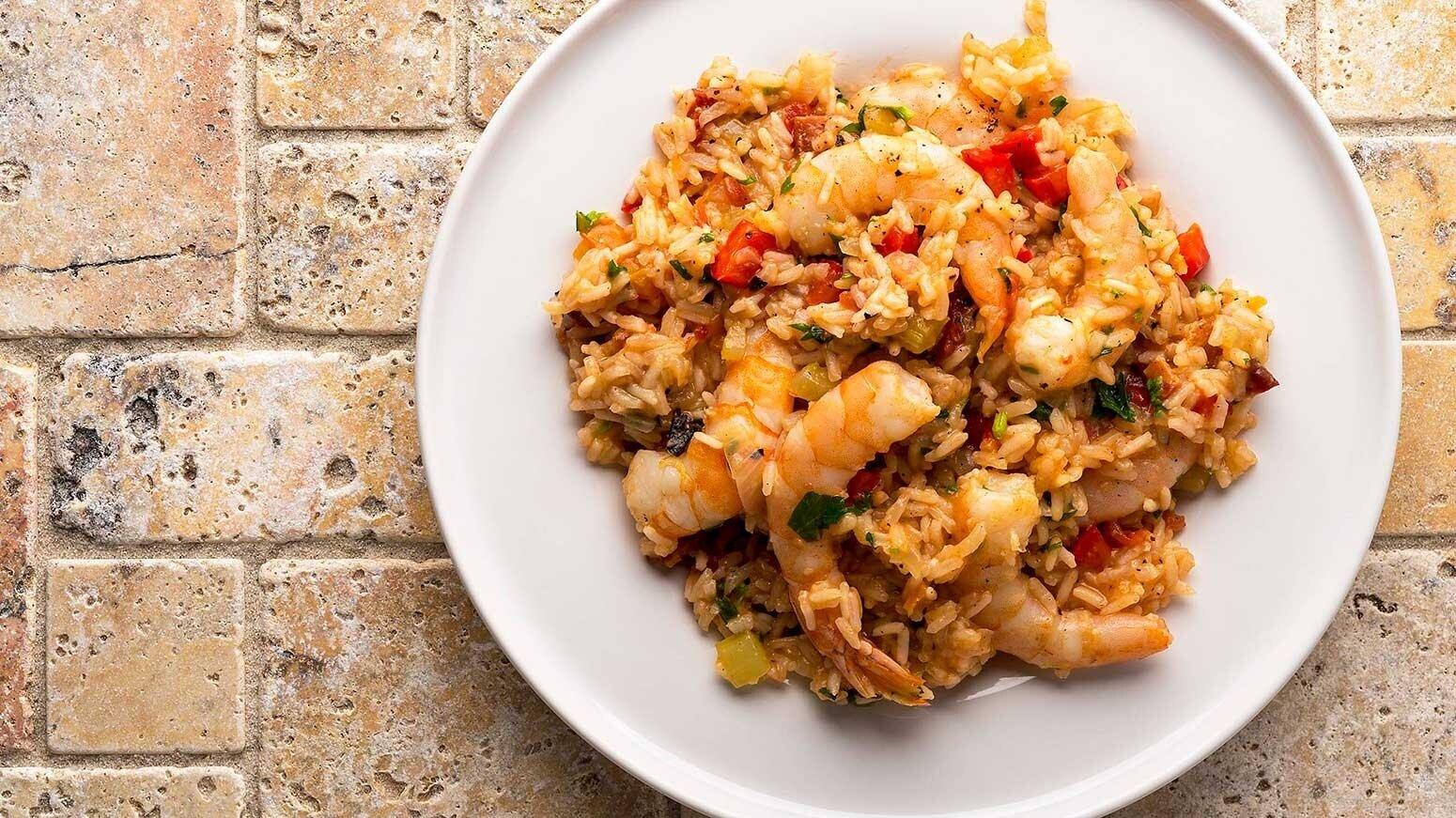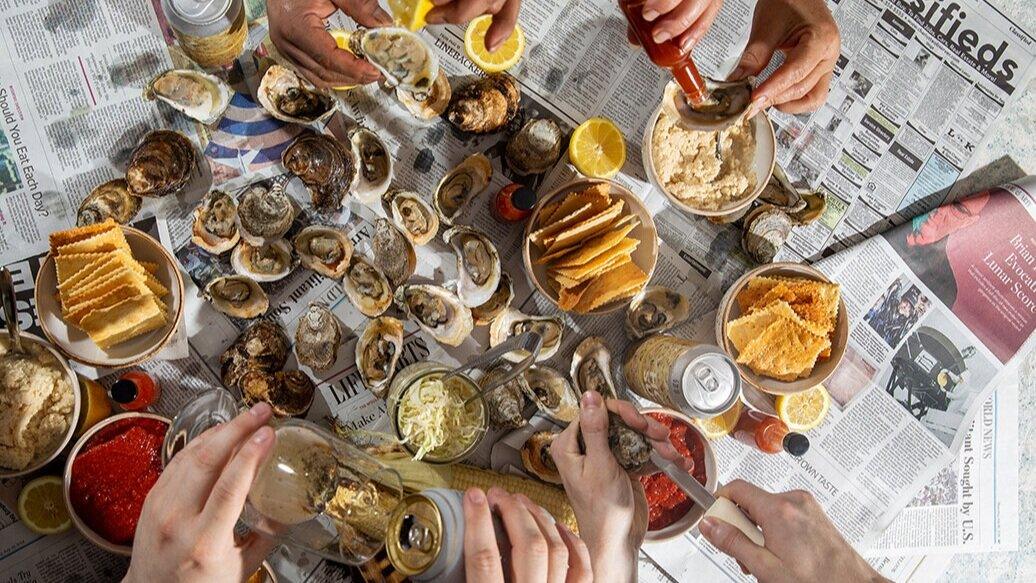Article: Craving Carolina Rice

Craving Carolina Rice
Growing up in Savannah, GA, the starch of choice at our family’s table was always rice. Shrimp pirloo (that’s pur-loo), Spanish rice, and shrimp almond casserole were all favorites of my father and me. But this is typical for families living in the Lowcountry, where rice has been a staple since it was first planted outside Charleston in 1685.
As I sit here shut up in my home office since the Governor declared a “shelter in place” order to prevent the spread of the coronavirus pandemic, I start to ask myself what kind of food I want to be locked up with in this house for the next eight to ten weeks. If I want to comfort myself and the family with a really outstanding meal right now, going out to a restaurant is going to be out of the question. No, what I really find myself daydreaming about is making a massive batch of shrimp pirloo, that Lowcountry cousin to jambalaya full of shrimp and smokey ham.
So right now, I’m staring down into a huge 20 lb. box of Carolina Gold Rice I purchased online last week right after it was announced that we were all to stay at home. What’s so special about rice, you might ask? Well, you could call Carolina Gold the polar opposite of almost every bland mass-produced Uncle Bens product you’ve ever tasted. It is a “heritage” strain of rice...basically the same thing the Founding Fathers would have served at their tables, so it has not been bred with modern techniques to maximize production at the expense of flavor. Cooking this rice on your stove you’ll notice that instead of giving off the starchy smell of typical rice, if fills your kitchen with a beautiful nutty aroma. And its wonderfully complex flavor has made it the rice of choice of chefs in high end restaurants across the South, and inspired the BBC to call it “the world’s greatest rice”.
Up until the Civil War, this was the most popular type of rice consumed in the United States. In fact, prior to the Revolutionary War, rice had already made Charleston one of the wealthiest cities in the US. It was the protection of that wealth that inspired the British crown to found the colony of Georgia, establishing my hometown of Savannah in 1733 to shield Charleston from the covetous Spaniards in Florida. But by the end of the 19th century, a combination of the Civil War, Reconstruction, a couple of severe hurricanes, and industrial production methods killed off rice cultivation in the Carolinas. And it would be gone for good, except for the efforts of Dr Richard Schultze, an eye doctor from Savannah in the 1980s. An avid duck hunter, he’d read stories of the flavorfulness of “rice-fed ducks” that had been prized in the Antebellum South. After some research, he found that a USDA seed bank in Texas still had some of the Carolina Gold seeds in its vault, which he planted on his duck hunting vacation property in South Carolina. Soon he started selling it in small quantities, which drew the attention of Glenn Roberts at Anson Mills…a high-end grower of heritage grains. Thus began the revival of rice growing in the Carolinas…the crop that initially built the state, not to mention many of those beautiful homes on the Battery in Charleston.
Eventually, we’ll be offering Carolina Gold rice here on our site once the storefront is up and running, but until we do here are the links to two sources… Anson Mills and Carolina Plantation Rice.
So, back to the present, I’ll be unpacking this box of Carolina Gold and using it to make a massive batch of Shrimp Pirloo this evening. Let me share the recipe I’ll be using, as well as some advice on how to make your rice come out right every time.
Shrimp Pirloo
Serves 6
Ingredients
-
1 tsp cayenne pepper
-
1 tsp ground nutmeg
-
1 tsp freshly ground pepper
-
1 tsp salt
-
2 lbs Gulf shrimp, peeled
-
1/4 lb andouille sausage or smoked country ham, finely diced
-
2 Tbsp vegetable oil
-
1 medium shallot, finely chopped
-
1 celery stalk, chopped
-
1 lb fresh okra, thinly sliced
-
2 cloves garlic, finely chopped
-
1 green bell pepper, finely chopped
-
1 medium tomato, peeled and diced
-
1 cup corn kernels
-
1 Vidalia onion
-
Tbsp fresh rosemary, finely minced
-
1 tsp celery seeds
Preparation
Let’s start with the rice. Combine 3 cups water and 1/2 tsp. salt in a medium saucepan and bring to a boil. Add 1 1/2 cups rice, stir a couple of times and cover, reducing heat to medium/low. Simmer for 20 minutes. Now you'll be tempted to lift the lid to check on the rice and stir it, but don’t do it more than once. Doing so releases all that steam and keeps you from reaching that 2_1 water to rice ratio necessary to hydrate the rice properly. So don’t give in to temptation or you might ruin the batch. When its done, take it off the heat, fluff the rice with a fork, put the cover back on and set aside.
Now for the pirloo. In a bowl combine the nutmeg, cayenne, salt and prepper. Add the shrimp and toss to coat.
In a skillet, heat the oil on medium and then add seasoned shrimp. Cook about 1 minute per side and set them aside. Add shallots and cook stirring for 1 minute. Add okra and bell pepper. Stir, reduce the heat and cover, cooking the vegetables for around 5 minutes until slightly soft
Add the corn, onion, rosemary, ham or sausage, and celery seeds to skillet, putting the cover back on. Cook another 5 minutes until the onions soften. Add the shrimp and increase the heat back to medium, stirring constantly for about another minute. Stir in the rice and tomato and cook for another 2-3 minutes. Serve.


